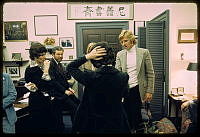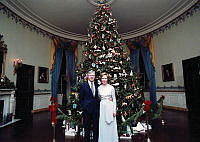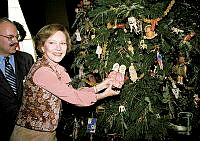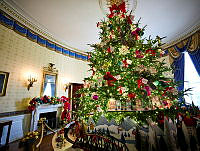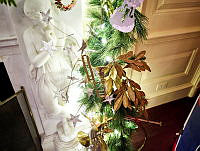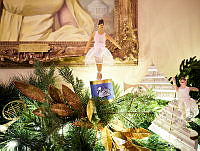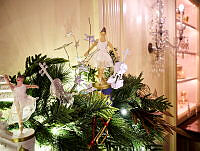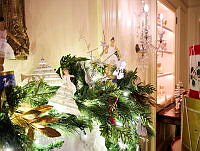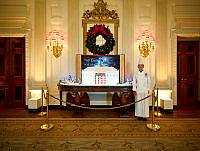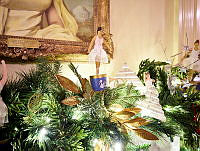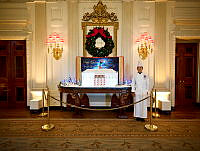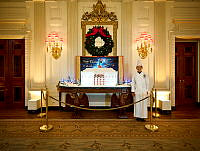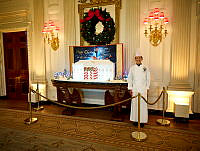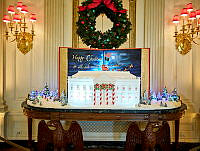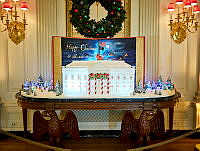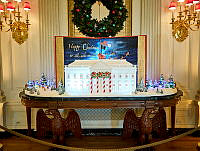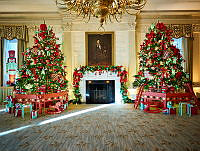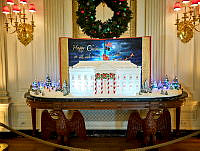
Livery at the White House; White House History (Number 32) - Photo 3
The New York World, October 27, 1903, presented a pageant of supposed livery worn in Theodore Roosevelt’s White House. By portraying the White House employees in this manner, the cartoon presents the uniforms not as an innovation needed for the modern presidency but as products of an outmoded era that Americans had already escaped through republican revolution.
First is the night watchman, who wears armor and wields a lantern and billyclub reminiscent of a bumbling, municipal constable from early modern Europe.
The court physician is a pointed reference to the surgeon general of the U.S. Navy and Roosevelt’s personal physician, Presley Marion Rixey. His brush mustache is easily recognized.
The female treasury clerk’s dress, with its ruffled underskirt, calls to mind eighteenth-century court fashion. Her use of a fan reflects her social status superior to that of any government employee. She wears opera-length gloves, typically reserved for formal occasions, and a powdered wig. It is interesting to note the inclusion of the female treasury clerk in the cartoon. Female treasury clerks did not work in the White House; they worked in the Treasury Building adjacent to the White House. By including her, the cartoonist suggests that the White House was becoming an expanding court and that its uniforms were effeminate.
The bodyguard’s costume is a pointed commentary on the use of the Secret Service and Metropolitan Police to protect Roosevelt and his family. The bodyguard is marching, sword drawn, and his uniform closely resembles those of the imperial guards of Russia or of sword-rattling Prussia. Notable is the eagle on his helmet.
The secretary is William Loeb dutifully taking dictation from the president. Loeb’s manner of writing is stiff and mechanical, and his nose is pointed up snobbishly. The cartoonist is clarifying the difference between a monarchical secretary and an American secretary guided by republican virtue.
Lastly, the cartoonist presents the messenger, whose uniform originally sparked the controversy. Similar to the other figures in the cartoon, the messenger is wearing a plumed hat and is in full stride with two messages. Of particular importance is the message labeled “P. O. Scandal,” reminding the World’s readers of the corruption, extortion, and blackmail in the U.S. Post Office.
- Date of Work
- October 27, 1903
- Medium
- Cartoon
- Credit
- New York World














